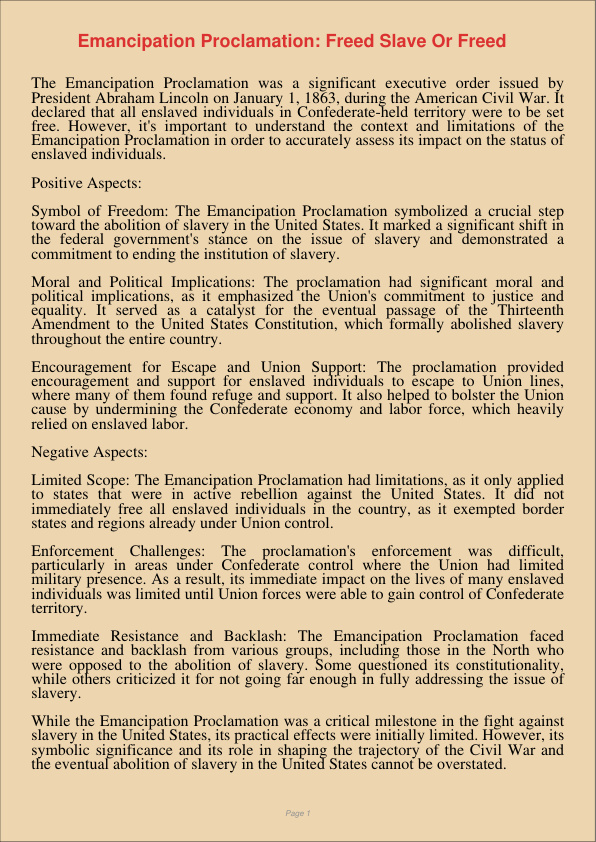Emancipation Proclamation Freed Slave Or Freed
Jan 8, 2024
emancipation proclamation
freed slave
Business
Psychology

The Emancipation Proclamation was a significant executive order issued by President Abraham Lincoln on January 1, 1863, during the American Civil War. It declared that all enslaved individuals in Confederate-held territory were to be set free. However, it’s important to understand the context and limitations of the Emancipation Proclamation in order to accurately assess its impact on the status of enslaved individuals.
Positive Aspects:
Symbol of Freedom: The Emancipation Proclamation symbolized a crucial step toward the abolition of slavery in the United States. It marked a significant shift in the federal government’s stance on the issue of slavery and demonstrated a commitment to ending the institution of slavery.
Moral and Political Implications: The proclamation had significant moral and political implications, as it emphasized the Union’s commitment to justice and equality. It served as a catalyst for the eventual passage of the Thirteenth Amendment to the United States Constitution, which formally abolished slavery throughout the entire country.
Encouragement for Escape and Union Support: The proclamation provided encouragement and support for enslaved individuals to escape to Union lines, where many of them found refuge and support. It also helped to bolster the Union cause by undermining the Confederate economy and labor force, which heavily relied on enslaved labor.
Negative Aspects:
Limited Scope: The Emancipation Proclamation had limitations, as it only applied to states that were in active rebellion against the United States. It did not immediately free all enslaved individuals in the country, as it exempted border states and regions already under Union control.
Enforcement Challenges: The proclamation’s enforcement was difficult, particularly in areas under Confederate control where the Union had limited military presence. As a result, its immediate impact on the lives of many enslaved individuals was limited until Union forces were able to gain control of Confederate territory.
Immediate Resistance and Backlash: The Emancipation Proclamation faced resistance and backlash from various groups, including those in the North who were opposed to the abolition of slavery. Some questioned its constitutionality, while others criticized it for not going far enough in fully addressing the issue of slavery.
While the Emancipation Proclamation was a critical milestone in the fight against slavery in the United States, its practical effects were initially limited. However, its symbolic significance and its role in shaping the trajectory of the Civil War and the eventual abolition of slavery in the United States cannot be overstated.